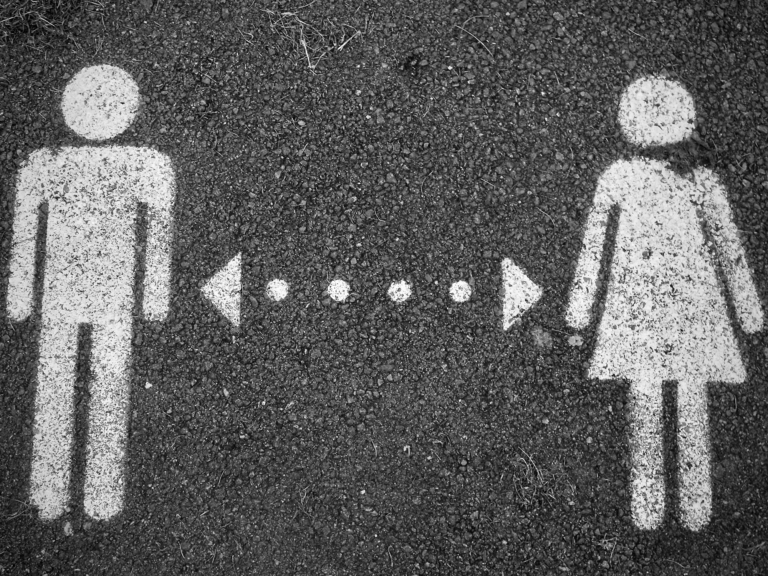Transfer reductions to refugees yield substantial negative returns
Externally reviewed
There were negative total returns of the Danish Start Aid reform from 2002, which reduced welfare benefits for refugees without employment by up to 50%. On the positive side, refugees entered employment faster due to the lower transfers. But on the negative side, crime rates increased and children from the affected refugee families performed worse in the education system later in life, resulting in substantially lower earnings when they entered the labor force as adults.
The Start Aid reform from 2002 reduced the welfare benefits that newly arrived refugees in Denmark could receive by up to 50%. A previous study from the ROCKWOOL Foundation has shown that the increased economic incentives, as brought about by the reform, led to more adults (primarily men) finding employment more quickly than they otherwise would have. For example, before the reform around 10% found employment within the first year in the country, while this increased to around 20% after the reform. Yet, the lower benefits did not lead to persistent employment effects: After 5-10 years in the country, only about half of the adults were employed regardless of the benefit level. As the employment level remained
low among the affected families, the reform resulted in significant disposable income reduc- tions for the majority of affected families. This raises the question of how the lower benefits affected the children in these families and whether the Start Aid reform contributed positively or negatively to the Danish economy overall.
The new study from the ROCKWOOL Foundation com- pares the positive employment effects of the lower bene- fits with the consequences which the lower benefits had for the children in the affected families – and finds that the long-term returns of the reform are negative.

Note: The figure shows the overall returns (benefits minus costs) of the introduction of Start Aid per family (two adults, one child aged 7-14, and one teenager aged 14-18) across time since the reform. The total effects are calculated as the sum of the effects of the introduction of Start Aid on the earnings of adults and children (aged 7-14 at the time of the reform) and the effects of the introduction of Start Aid on crime rates among adults and children (aged 14-18 at the time of the reform). The costs of crime are cal- culated based on the "willingness to pay to avoid crime" for different types of crime. Each estimate of the overall effects shows the present value of the individual effects on earnings and crime, respectively, from the time of the introduction of Start Aid: for example, the overall effects 5-6 years after the reform are calculated as the effects from 1-2 years discounted to year 0 + the effects from 3-4 years discounted to year 0 + the effects from 5-6 years discounted to year 0.
Reducing transfer levels for refugees results in substantially larger gaps between Danes and refugees
In many aspects, children who have arrived to Denmark as refugees fare worse than Danish children of the same age. A new study shows that a reform, which significantly reduced benefits for refugee families, led to a widening of the gap.
Figure 2 shows the percentage by which the existing differences between children who arrived in Denmark as refugees and Danish children increased as a result of the welfare benefit reduction that came about by the reform. Among children who arrived in Denmark in preschool age, differences in 9th grade GPA increased by around 40%. The study also shows that the negative effects materialised in reading tests at even lower grade levels, and that it especially were children who were exposed to the lower benefits between ages four to six who fared worse.
Children who were exposed to the lower benefits during school age completed fewer years of schooling than equivalent children who were not exposed to the lower benefits. This is due to a greater tendency not to complete secondary education. Before the reform, around 37% did not complete secondary education. Among same-age Danes, the corresponding percentage was 16% (a difference of 20 percentage points). After the welfare benefit reduction, the percentage not completing secondary education rose to 47% (such that the difference between refugee children and Danish children increased by almost 50%).
Following the children into adulthood furthermore shows that the group that experienced reductions in education due to the reform also had significantly lower likelihood of employment and earnings. Measured 15-16 years after arrival to Denmark, the difference in employment rates between refugees who arrived to Denmark in school age and equally aged Danes doubled from about seven to 14 percentage points because of the reform. A similar effect is seen for earnings. Here, the gap compared to Danes increased by around 50% from €7,500 to €11,500 per year.

Note: The figure shows the percent- age changes in differences between refugee children and Danish children as a result of the Start Aid reform. 9th grade GPA is measured for children who received residency in Denmark at ages 0-7. Years of completed schooling, the fraction without secondary education, the fraction in employment, and earnings are measured for children who received residency in Denmark at ages 7-14. Years of completed schooling and the fraction without secondary education are measured in 2020. The fraction in employment and earnings are meas- ured as the average 15-16 years after receiving residency in Denmark.
About the study
The study is based on refugees and family reunified immigrants from non-Western countries who were granted residency in Denmark from 2001-2003. In the study, children with parents who received residency just before the reform (and therefore were eligible for regular social assistance benefits) are compared with children whose parents received residency just after the reform (and therefore were eligible for the reduced Start Aid benefits). These two groups initially differ only according to the transfer levels they were eligible for. Differences in the outcomes for the children thereafter can, thus, be attributed to the reduced reduction in welfare benefits.
Related publications

Research report
Unintended Consequences of Welfare Cuts on Children and Adolescents
Go to research reportRelevant employees
Latest releases on the same welfare topic

Research report
Left in Charge: Political Rule and the Rise of Local Welfare
December 2025

Research report
Effects of Higher Staff-Child Ratios in Danish Kindergartens
December 2025

Research report
Workplace Amenities and the Gender Pay Gap
December 2025

Video
Conference: All Hands on Deck
November 2025

